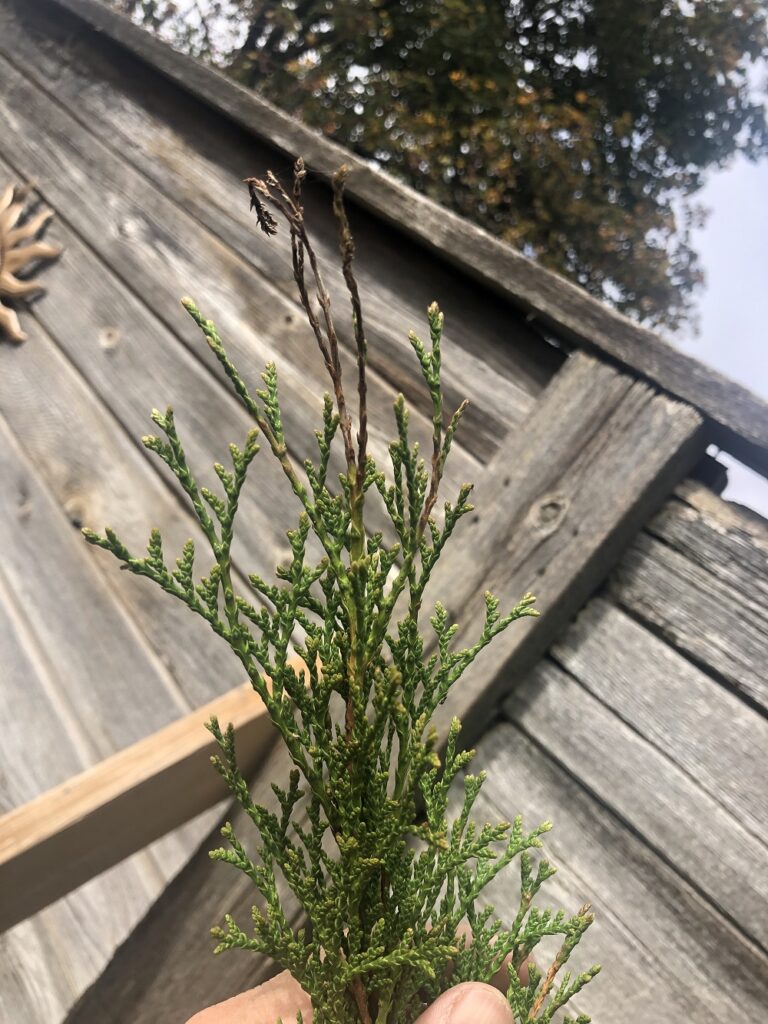
I planted two week ago and watered them regularly. Two types of trees: one big and heavy root ball local pyramid shaped and the other BC grown slim tall ones with the dying tip issue. They were planted in the same conditions, triple mix on the bottom and compost on the outside, saturated with root rescue. I am watering to keep the root soil damp, 2 time a week faucet spraying. I am worrying the slim cedars may be dying from the top. What is the cause and how to rescue? When I buy the slim tall tree from HD, some show withering sign on the top already in fact. However the heathy ones become withering on the top branch tips.
We get many questions about Emerald Cedars. A detailed answer we provided another inquirer, which gives lots of advice about the care of these trees, can be found here.
Your photo shows the tip of a single branch with a small amount of browning. Is the browning you see widespread throughout the tree? If not, it’s possible that there was some mechanical damage to that spot on the tree. Prune that off and see if any other browning occurs elsewhere.
There is also the possibility that you have been over- or under-watering. Those trees do tolerate a moister soil than many evergreens, but they will “drown” if kept overly wet. Conversely, despite your watering, the rootball may be very dry. During the first weeks after planting, the rootball dries much more rapidly than the surrounding soil because the roots have not extended outward beyond the rootball. Dig down and check the moisture content in the original rootballs. Are the rootballs dry, moist or wet? Moist is OK, but dry or wet means you must alter your watering regime.
However, there are some diseases that specifically cause needle blight at the tips of Arborvitae (Emerald Cedars). An excellent article from the University of Massachusetts Amherst, which describes and illustrates these diseases can be found here.
If the rootballs are fine and the browning is widespread or continues, or if the trees clearly exhibit the symptoms of the tip blights described in that article, you should probably return them to the vendor, since you only purchased the trees two weeks ago.

